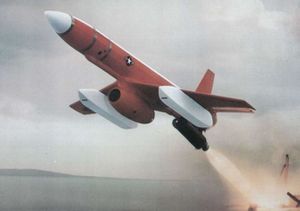February 9, 2012: STRATEGY PAGE
North Korea appears to be developing a UAV based on the American MQM-107 reusable target drone. The MQM-107 was apparently obtained from Iran, which got some in the late 1970s. The MQM-107 is a 664 kg, 5.5 meters (18.1 feet) long UAV with a 3 meter (9.3 feet) wingspan. It has a top speed of 950 kilometers an hour and max altitude of 12,200 meters (40,000 feet). Payload was usually less than 50 kg (110 pounds) and endurance was about two hours. Carrying less fuel allowed for a larger payload. Takeoff was via a rocket booster and landing was via a parachute. The MQM-107 entered service in the late 1970s and about 2,200 were produced until production ceased in 2003. The U.S. Army and Air Force were the biggest users.
The MQM-107 is pretty basic technology, and North Korea can add a more efficient engine and modern navigation gear (GPS and the like), as well as many powerful, lightweight sensors to the MQM-107 airframe. The high speed provided by the jet engine enables the new North Korean UAV to quickly enter South Korean air space, take some pictures, and get out before missiles locked on and hit the MQM-107. North Korea is also believed to be developing an attack version of their UAV, another reason for going with a jet powered aircraft.
The replacement for the MQM-107, in U.S. service, was the $900,000 BQM-167. This is a one ton, single engine aircraft that is 6.1 meters (20 feet) long, with a 3.4 meter (11 foot) wingspan. Max speed is about 1,000 kilometers an hour, and the carbon fiber composite airframe can handle 9 g turns. Launched via a rocket from a rail the UAV lands via parachute and can fly automatically or via ground control. Max altitude is 16 kilometers (50,000 feet) and minimum is 16 meters (50 feet).
The BQM-167 can stay aloft three hours per sortie. Equipped with GPS, the ground based operator usually maneuvers the BQM-167 to provide realistic targets for air force or navy missile carrying aircraft, or U.S. Army Patriot anti-aircraft missiles. Most of the time, the UAV is just used to ensure that radar operators can track and precisely locate an aerial target. But sometimes, the missiles themselves are tested, and the UAV is fired on. In some of these situations, the UAV is equipped with countermeasures (like chaff or flares or electronic jammers) and will also maneuver as a manned aircraft would.





